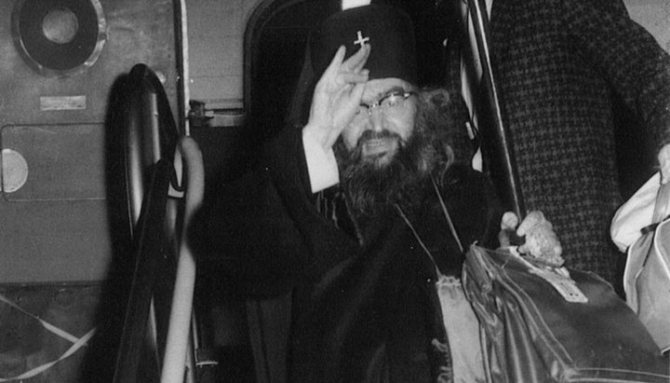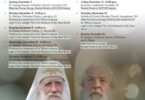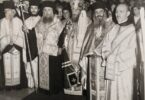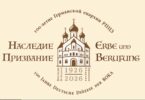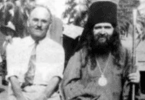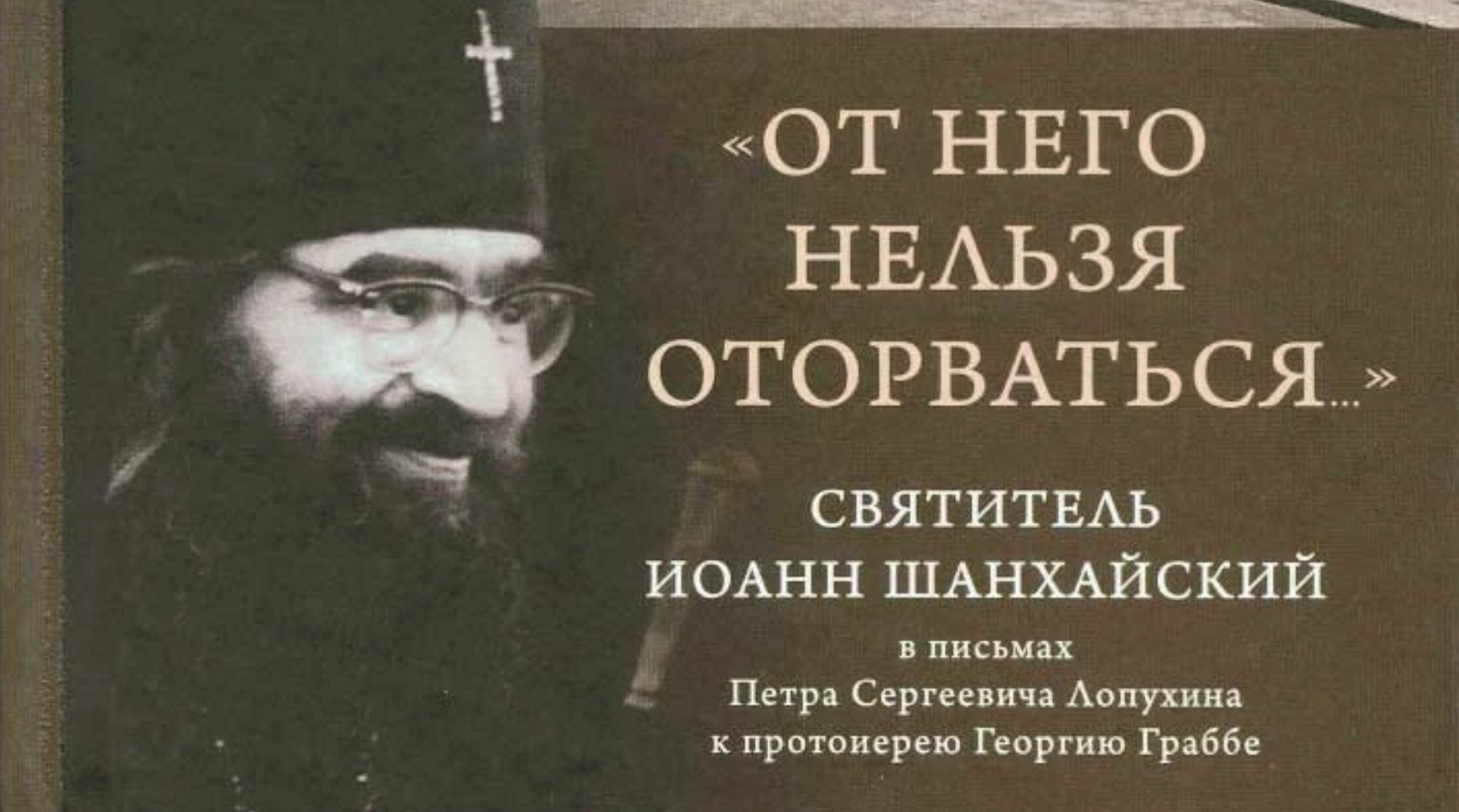I n connection with the court case that flared up in San Francisco around the construction of the Cathedral of Our Lady Joy of All Who Sorrow, the party opposed to St. John accused him of being in the Moscow Patriarchate in Shanghai after World War II. Responding to this, St. John’s defenders and his fellow workers from Shanghai recalled that he “had never submitted to the Moscow Patriarchate, never entered into any relations with the Moscow Patriarchate, and had never had any such connection”[1] Nun Vera,“Pravda o sviatitele Ioanna Shankhaiskom chudotvortse” [“The Truth about St. John the Wonder-worker of Shanghai”], Internet-sobor . In this sentence, nothing is said about the liturgical commemoration of Patriarch Alexis I (Simansky).
In July of 1945, St. John wrote in an encyclical to his flock: “At the end of July of last year, we received the information that the Harbin hierarchs decreed that His Holiness the Patriarch of Moscow should be asked to receive them under his leadership. We wrote promptly to Archbishop Viktor, saying that, without knowing anything about the fate of the Synod Abroad and not having the right to remain out of subordination to a supreme Church authority, we must enter into relations with His Holiness the Patriarch of Moscow and, in the absence of impediments, place ourselves under him” [2]From the encyclical of St. John of Shanghai, dated August 2, 1946. Cited from Monk Benjamin (Gomarteli), Letopis’ tserkovnykh sobytii nachinaia s 1917 goda. [Timeline of Church Events. Part IV: … Continue reading
At the same time, on July 31, 1945, Archbishop John wrote to Archbishop Viktor, Head of the Beijing (Peking) Mission: “Following the decision of the Diocese of Harbin and in light of the absence of information about the Synod Abroad over the course of a number of years, any other decision of our Diocese would make it an entirely independent, autocephalous diocese. There are no canonical prerequisites for an independence of this sort, since there is no doubt as to the legitimacy of the […] recognized Patriarch. Relations with that [Moscow –ed.] church authority are also becoming possible, such that the Decree of November 7, 1920, is inapplicable. At the present time, there are no grounds for persisting in the status of a self-governing diocese; we ought to act as the Diocese of Harbin has. We should keep commemorating the name of the President of the Synod Abroad, since according to Canon 14 of the First-Second Local Council, one may not cease commemoration of one’s metropolitan at will, whereas it is necessary to introduce the commemoration of the name of the Patriarch […] by your Decree throughout the Diocese… at the present time, there are no conditions of an ideological order being stated to us, such as served as the reason for our change into a church administration abroad. If unacceptable conditions should be stated again, it will be up to whatever church administration is able to be created under the external conditions to preserve the current order of church governance” [3]Archive of the Department of External Church Relations of the Moscow Patriarchate, File No. 24. Cited from Monk Benjamin (Gomarteli), Letopis’ tserkovnykh sobytii nachinaia s 1917 goda. … Continue reading.
In August 1945, Archbishop Viktor asked Patriarch Alexis I to receive him and St. John into his jurisdiction. Archbishop Viktor’s younger sister, O. V. Keping, recalled: “At the end of 1944, while we were still under Japanese occupation, Archbishop Viktor sent a relative of his, Boris Mikhailovich Keping, his sister’s husband, to the Soviet Embassy in Peking. He brought with him an official report addressed to the Patriarch of Moscow and All Rusʹ with a request for reunification with the Patriarchal Church”. [4]O. V. Keping. “Poslednii Nachalʹnik Rossiiskoi Dukhovnoi Missii v Kitae — arkhiepiskop Viktor: zhiznennyi putʹ” [“The Life of Archbishop Victor, the Last Head of the Russian Ecclesiastical … Continue reading
The conclusion of the matter of the commemoration of Patriarch Alexis I is laid out in the entry on St. John in the Orthodox Encyclopedia:
“Inasmuch as communications between Shanghai and Peking were cut off, and no answer was received to Archbishop Viktor’s letter, on September 6, [St. John] independently decided to begin commemorating the name of Patriarch Alexis in Russian churches in Shanghai, ‘regardless of whether the question of the commemoration of the supreme church administration had been resolved’. However, on October 2, [St. John] received a brief radiogram from Metropolitan Anastassy in Geneva saying that the ROCOR Synod of Bishops was continuing its operations. The commemoration of Patriarch Alexis in Shanghai ceased from that moment. In this way, [St. John] remained the sole Russian Orthodox bishop in China who had not submitted to the Moscow Patriarchate. In November, [St. John] received a telegram from Bishop Tikhon (Troitskii) of Western America, who informed him that he, along with Archbishop Vitaly (Maximenko) of Eastern America and Bishops Ioasaph (Skorodumov; later Archbishop) of Montreal and Ieronim (Chernov; later Archbishop) of Detroit, still remained under Metropolitan Anastassy and did not acknowledge the jurisdiction of the Moscow Patriarchate” [5] L. V. Litvinova, “Ioann”, Pravoslavnaia Entsiklopediia.
References
| ↵1 | Nun Vera,“Pravda o sviatitele Ioanna Shankhaiskom chudotvortse” [“The Truth about St. John the Wonder-worker of Shanghai”], Internet-sobor |
|---|---|
| ↵2 | From the encyclical of St. John of Shanghai, dated August 2, 1946. Cited from Monk Benjamin (Gomarteli), Letopis’ tserkovnykh sobytii nachinaia s 1917 goda. [Timeline of Church Events. Part IV: 1939-1939.] Historical Studies of the Russian Church Abroad. |
| ↵3 | Archive of the Department of External Church Relations of the Moscow Patriarchate, File No. 24. Cited from Monk Benjamin (Gomarteli), Letopis’ tserkovnykh sobytii nachinaia s 1917 goda. [Timeline of Church Events. Part IV: 1939-1939.] Historical Studies of the Russian Church Abroad |
| ↵4 | O. V. Keping. “Poslednii Nachalʹnik Rossiiskoi Dukhovnoi Missii v Kitae — arkhiepiskop Viktor: zhiznennyi putʹ” [“The Life of Archbishop Victor, the Last Head of the Russian Ecclesiastical Mission in Peking”]. Pravoslavie na Dalʹnem Vostoke: 275-letie Rossiiskoi Dukhovnoi Missii v Kitae [Orthodoxy in the Far East: 275th Anniversary of the Russian Ecclesiastical Mission in China]. Saint Petersburg, 1993. p. 95. Cited from Monk Benjamin (Gomarteli), Letopis’ tserkovnykh sobytii nachinaia s 1917 goda. [Timeline of Church Events. Part IV: 1939-1939.] Historical Studies of the Russian Church Abroad. |
| ↵5 | L. V. Litvinova, “Ioann”, Pravoslavnaia Entsiklopediia. |

